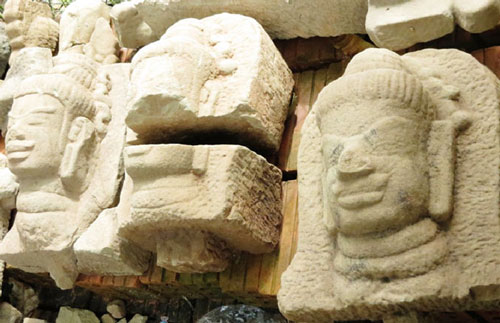The foundations of a Cham tower complex have recently been unearthed in Qua Giang 2 Village, Hoa Phuoc Commune, Hoa Vang District, Da Nang, after excavations on a 300m2 area which lasted nearly a month. The excavation was jointly conducted by archeologists from the Ha Noi University of Social Sciences and the Humanities (USSH) and Da Nang’s Museum of Cham Sculpture.

It is believed that the complex was an important religious centre for the Cham people. Archeologist Nguyen Chieu from the USSH said that the newly-discovered foundations date back to the late 10th century. One foundation is 10m long and 7m wide, a second is 6.2m long, and a third is about 20m in length. Of special interest, some of the bricks found in the foundations featured subtle patterns and were used to decorate the walls of the Cham towers. This suggests that the Cham people collected bricks from old collapsed towers when they built new ones.
Remains of bricks believed to be either from a foundation or a wall, along with many valuable artifacts, were also unearthed at the site. Most notably, a west-facing sandstone perron, with exquisite sculptures of a “makara” (monster), was also discovered. The archeologists have yet to identify whether this was from the main tower or not.
In addition, a sandstone altar with a relief featuring the face of the God Siva, and 2 others with intact images of human heads, were found at the site. This proves that Hinduism played a vital role in the spiritual lives of the Cham people at that time. Archeologist Chieu remarked that the hundreds of fragments of stone and terracotta found at the site were made by Cham, Vietnamese and Chinese people between the early 10th and 11th centuries. This clearly shows that there was a widespread cultural exchange between the Cham people and their neighbours.